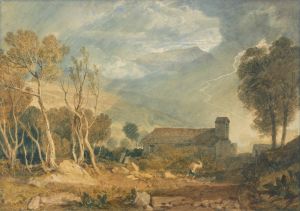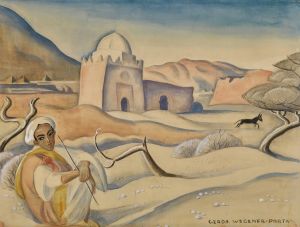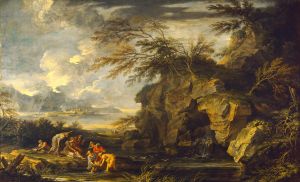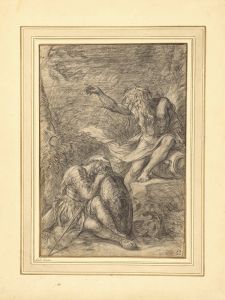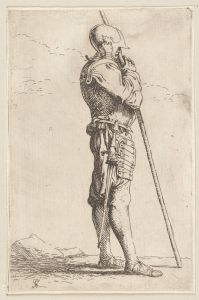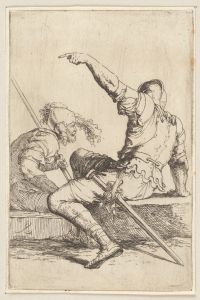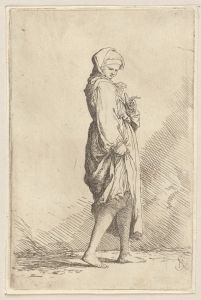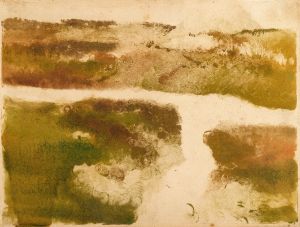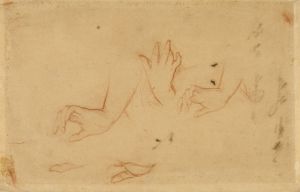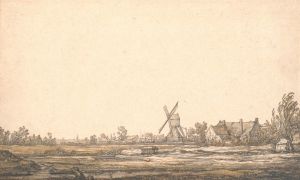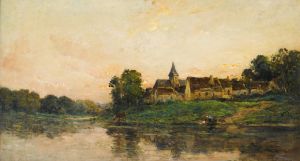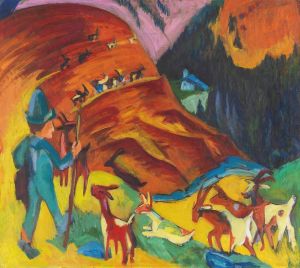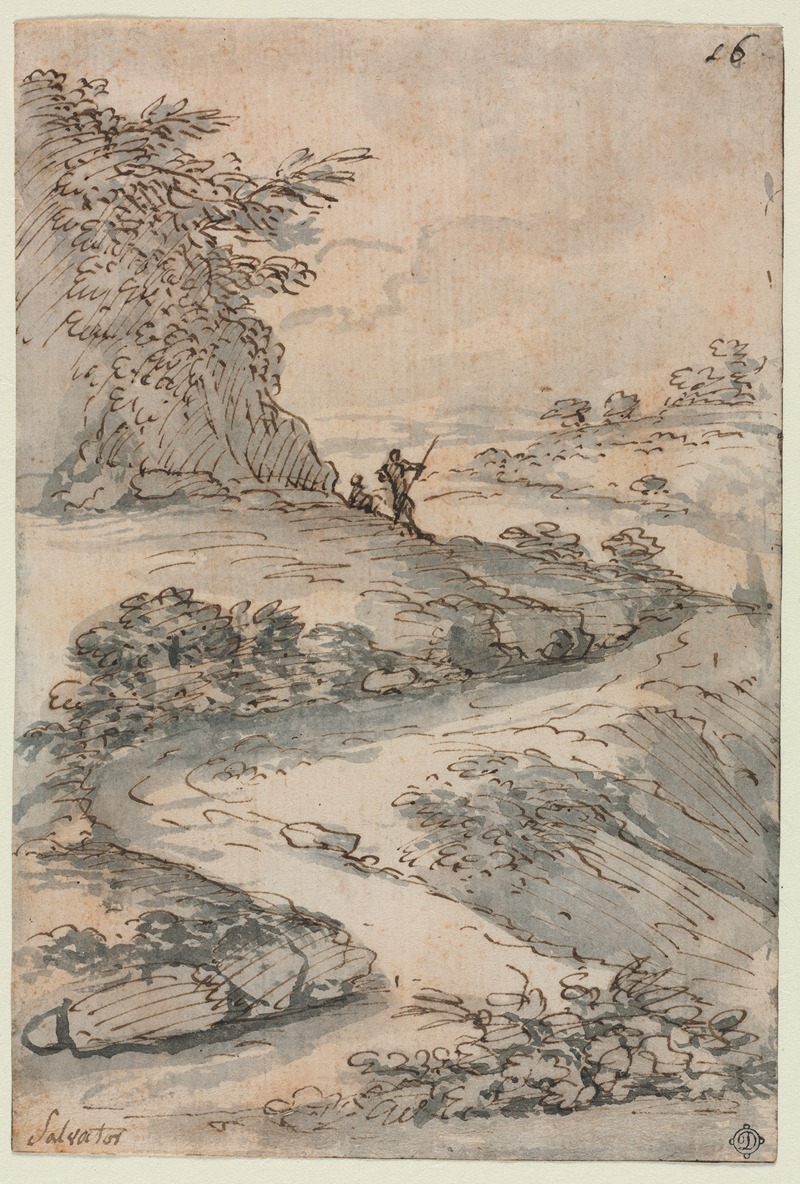
Figures on a Winding Road
A hand-painted replica of Salvator Rosa’s masterpiece Figures on a Winding Road, meticulously crafted by professional artists to capture the true essence of the original. Each piece is created with museum-quality canvas and rare mineral pigments, carefully painted by experienced artists with delicate brushstrokes and rich, layered colors to perfectly recreate the texture of the original artwork. Unlike machine-printed reproductions, this hand-painted version brings the painting to life, infused with the artist’s emotions and skill in every stroke. Whether for personal collection or home decoration, it instantly elevates the artistic atmosphere of any space.
Salvator Rosa's "Figures on a Winding Road" is a captivating example of the Italian Baroque painter's ability to blend landscape with genre painting, a style for which he became renowned. Salvator Rosa (1615–1673) was an Italian painter, poet, and printmaker, known for his unorthodox and often rebellious approach to art. He was a part of the Neapolitan school and later worked in Rome and Florence, where he became associated with the intellectual and artistic circles of his time.
"Figures on a Winding Road" exemplifies Rosa's skill in creating dramatic and atmospheric landscapes, often infused with a sense of mystery and narrative. The painting depicts a rugged, winding road set against a dramatic landscape, populated by figures that appear to be travelers or peasants. The road itself seems to lead the viewer's eye through the painting, creating a sense of movement and journey. Rosa's use of chiaroscuro, the contrast between light and dark, adds depth and drama to the scene, highlighting the figures and elements of the landscape.
Rosa's landscapes often included elements of the sublime, characterized by their wild, untamed nature and the sense of awe they inspire. This painting is no exception, as the winding road and the surrounding environment evoke a sense of adventure and the unknown. The figures in the painting, though small in scale compared to the vastness of the landscape, add a human element to the scene, inviting viewers to ponder their stories and the purpose of their journey.
Salvator Rosa was known for his rebellious spirit, both in his art and his life. He often challenged the conventions of his time, choosing to depict subjects that were not traditionally considered worthy of fine art. His landscapes, populated with bandits, soldiers, and peasants, reflect his interest in the lives of ordinary people and the dramatic potential of their stories. This approach set him apart from many of his contemporaries and contributed to his lasting influence on the Romantic painters of the 19th century.
"Figures on a Winding Road" is a testament to Rosa's ability to convey emotion and narrative through landscape. The painting's composition, with its dynamic road and strategically placed figures, creates a sense of depth and invites viewers to engage with the scene on multiple levels. Rosa's mastery of light and shadow further enhances the painting's dramatic impact, drawing attention to the figures and the rugged beauty of the natural world.
While specific details about the painting's provenance or current location may not be readily available, "Figures on a Winding Road" remains an important work within Rosa's oeuvre. It exemplifies his innovative approach to landscape painting and his ability to infuse his works with a sense of drama and narrative. Rosa's influence can be seen in the works of later artists who sought to capture the sublime and the picturesque in their own landscapes.
In summary, "Figures on a Winding Road" by Salvator Rosa is a remarkable example of Baroque landscape painting, showcasing the artist's unique style and his ability to blend narrative with the natural world. Through his use of dramatic composition and chiaroscuro, Rosa creates a scene that is both visually striking and rich with potential stories, reflecting his enduring impact on the art world.





